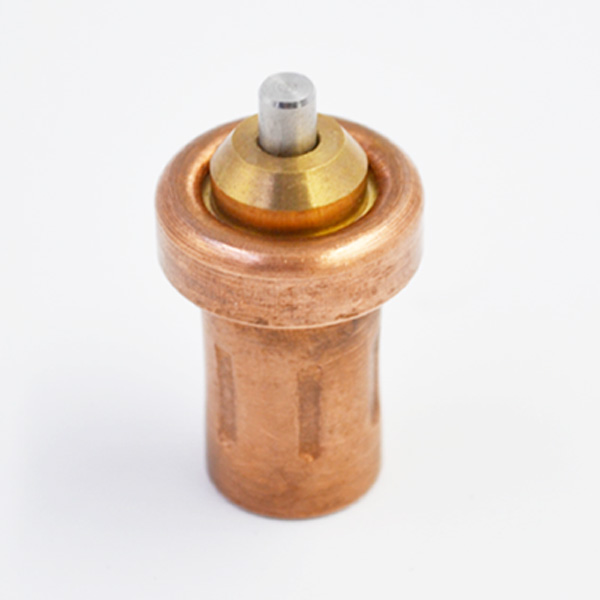In order to improve the output power gain of the motor controller and enhance the energy-saving and control stability of the motor, an optimal design scheme of the energy-saving circuit of the motor controller based on CMOS digital integrated circuit is proposed. The circuit design of motor controller mainly consists of AC amplifier circuit, filter circuit, voltage temperature drift suppression circuit and fine-tuning circuit. CMOS voltage control amplifier is used as the core device to improve the stability of motor controller output reference. Through the modular analysis and integrated design of the circuit, the optimal design of the motor controller is realized.
The circuit test results show that the designed motor controller has higher output gain and higher output efficiency. Motor is an important component of Mechatronics system, and also an important subsystem of large-scale electrical equipment. The motor relies on the motor controller to regulate the input/output voltage and power of the motor. Combined with the motor speed control inverter, the motor speed regulation and output power regulation are optimized [1]. There are many kinds of motors, which can be divided into axial-flow vertical-axis motor, centrifugal pressure-axis motor, permanent magnet brushless motor and so on according to their working mode. The drive system of motor relies on motor controller to realize DC drive and frequency drive. It can be seen that the motor controller is the core unit of the motor. By optimizing the energy-saving circuit design of the motor controller, the output stability of the motor can be improved, and the working efficiency of the motor can be improved. Research on the energy-saving design method of the motor controller has attracted people’s attention. The motor controller circuit designed in this paper is based on the digital integrated circuit with CMOS amplifier as the basic unit. Through the design of modular subsystem and integrated integrated design, the circuit design of motor controller is improved. Finally, the circuit test is carried out and the validity conclusion is drawn. The CMOS-based motor control system is based on the electromagnetic induction power transmission model. In order to realize the optimal energy-saving design of the motor controller, it is necessary to first analyze the working principle of the motor controller. The output voltage of the motor controller is transmitted through energy conversion and energy diversion, and the electromagnetic field is used as the medium. Electromagnetic induction coil controls power supply frequency, realizes energy-saving control and energy conditioning for different appliances, and improves the output power and transmission efficiency of motor. In order to improve the transmission power and efficiency of motor control, it is necessary to construct the energy model of electromagnetic resonance, design the AC amplifier circuit and filter circuit, form the coil sequence of high frequency resonance, drive the motor to rotate through the controller, and realize the motor control. The working principle and structure of the motor controller are shown in Fig. 1. It is shown.

According to the above working principle, the overall circuit design framework of motor controller is analyzed. The circuit design of motor controller is mainly composed of AC amplifier circuit, filter circuit, voltage temperature drift suppression circuit and fine-tuning circuit. The technical specifications of the designed controller need to meet: input voltage 220-360V, motor amplifier. The temperature drift of the large module is less than 3 ppm/C, the output error of analog power supply is less than 1 mV, the adjustable range of fine-tuning output voltage of the system is [ 5%]. The CMOS AC amplifier generates two-way voltage signals with output range of 0-5 V. The CMOS voltage control amplifier is used as the core device. AD8674 is a 4-channel high-performance operational amplifier, and the output voltage of OUTD pin is used. 0-5 V. According to the above design index analysis and device selection, the overall structure block diagram of energy-saving design of CMOS circuit in motor controller is obtained as shown in Figure 2. In order to optimize the design of the motor controller, the input/output parameters need to be optimized.

The output coil sequence of the motor controller adopts the magnetic resonance power transmission mode. In the circuit design, voltage control CMOS device is used as amplifier, and a C8051 single chip computer is used as the core control unit. In the circuit model of the controller, when the three-dimensional orthogonal low-frequency coil of the motor controller is in the resonant state, the controller can receive multiple resonant signals, and the resonant angle frequency of the voltage-controlled amplifier is [_0]. In formula: [h1 = _20M2srL2l RsRrL2l RsRoM2rl]. The high-pass filter and low-pass filter are used to improve the transient common-mode rejection of motor controller. The multi-channel Coupler digital isolator is used to judge the process of motor power transmission in and out. The performance curves of high-pass filter and low-pass filter of motor controller are obtained as shown in figs. 3 and 4. In formula, [h2 = _20M2rlRs RsRrRo]. In the design of motor controller circuit, using CMOS integrated circuit design method, the AC amplifier circuit, filter circuit, voltage temperature drift suppression circuit and fine-tuning circuit modules of the system are analyzed in detail.
Firstly, the schematic diagram of power transmission of motor controller is given as shown in Fig. 5. Since [VDC] varies with the parameters, after the capacitor is charged, the isolated DC signal is input before the coupled capacitor C, thermostatic element and the AC-coupled DC baseline restorer is used to avoid baseline drift. In CMOS amplifier, the leakage inductance and excitation inductance of the electromagnetic coupling device of the motor controller are calculated by finite element method after the triode [Q1] is disconnected through resistance R to capacitance [CC]. In order to reduce the eddy current loss of the coil window and improve the transmission efficiency of the system, the primary protection circuit and secondary circuit are designed to carry out capacitance [CC]. In the self-buffering baseline recovery design, when the motor controller is in a closed-loop state, the ASK signal receiver is used to generate the wake-up signal. Blackfin series 3D C1515S? 0477J coupling control is used to control the three-dimensional orthogonal low frequency and improve the rectification performance of the motor.

The rectifier circuit uses four diodes to form a 16-bit data input/output circuit, which outputs the motor control signal to the motor unit, and carries out electromagnetic coupling control under the general PPI mode. The interface between PPI and A/D chip is based on A/D.
The CMOS equivalent circuit of the motor controller is obtained by fine tuning the control signal as shown in Fig. 6. Accordingly, CMOS interface design of motor controller is carried out in general PPI mode. DMA parameters are set in primary side and secondary side, and low level conversion is carried out in A/D clock input of controller. The PPI interface design of motor controller is obtained as shown in Fig. 7. In order to reduce the interference between the AC amplifier circuit and the filter circuit and the voltage temperature drift, it is necessary to design the temperature drift suppression circuit.
Temperature drift suppression circuit is powered by analog 12 V, the output level is 3.3 V, and three capacitors, 10 [muF], 0.1 [muF] and 0.001 [muF], are used for DC-isolated filtering to realize temperature drift suppression. The design of temperature drift suppression circuit is shown in Figure 8. Finally, CMOS integrated circuit design of motor controller is carried out in PCB environment, and the optimal design of motor controller is realized through circuit modularization analysis and integrated design. In order to test the performance of the motor controller circuit designed in this paper, the full bridge motor control circuit is composed of UCC389 CMOS integrated device. The test parameters are given in Table 1.
The bias core is controlled within 10 mm, and the mutual inductance between resonance coils is 1.25 [mu H], 0.92 [mu H], and 0.43 [mu H], respectively. According to the above test parameters, the output power and efficiency of the motor control circuit designed in this paper are analyzed, and the results are shown in Figure 9. Analysis of the results of Figure 9 shows that the motor controller designed by this method has a high output power gain, and the output efficiency can still be stabilized to 95.75% under a larger load.
This shows that the motor controller designed has a large load capacity, a higher output power gain and a better motor performance. In order to enhance the energy-saving and control stability of the motor, this paper presents an optimal design scheme of the energy-saving circuit of the motor controller based on CMOS digital integrated circuit. The circuit design of motor controller mainly consists of AC amplifier circuit, filter circuit, voltage temperature drift suppression circuit and fine-tuning circuit. CMOS voltage control amplifier is used as the core device to improve the stability of motor controller output reference. The circuit test results show that the motor controller designed in this paper has high output power gain and efficiency, and realizes the energy-saving design of the motor.
